Dicamptodon tenebrosus
—
Coastal Giant Salamander
Also known as:
Pacific Giant Salamander
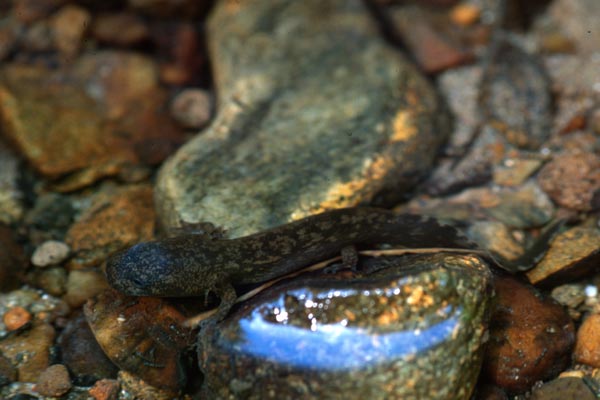
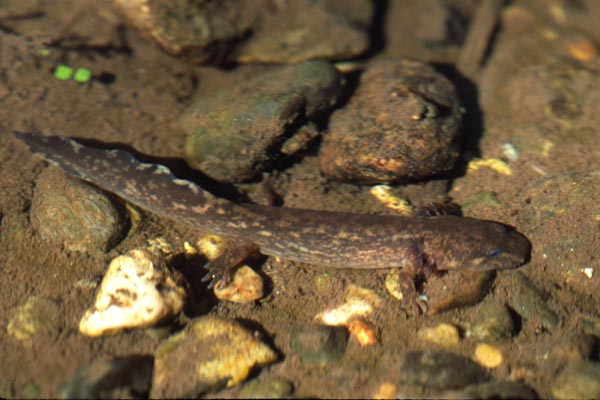
These salamander larva are often the most common predators in the streams where they reside, feeding off anything smaller. I was hoping to find the large adult form on land, but had no such luck. Sometimes this species remains in larval form for its whole life, even reproducing in that form, a phenomenon called neoteny.
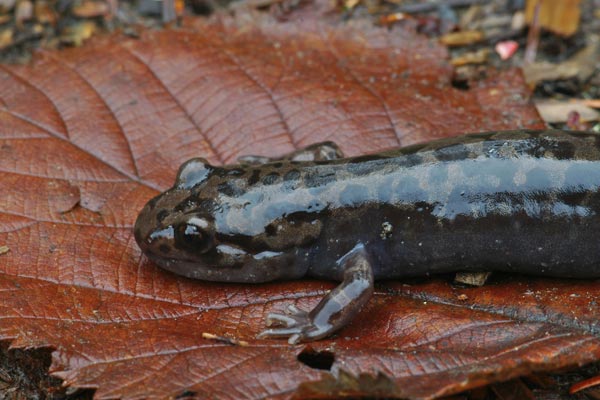
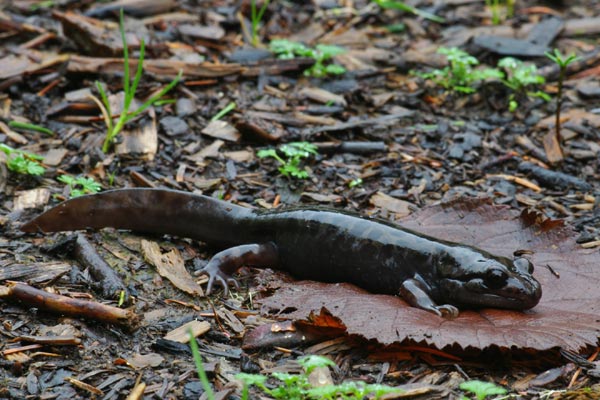
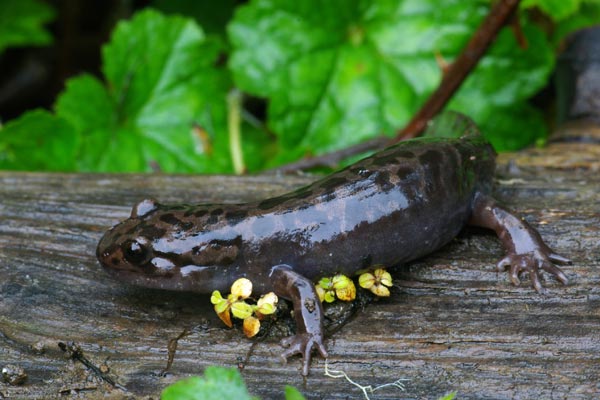
Finally, my first terrestrial form Giant Salamander. On my first morning of a week-long trip to Mendocino County, I found this great gloppy glob of a salamander hiding under the only loose piece of bark in our campground.
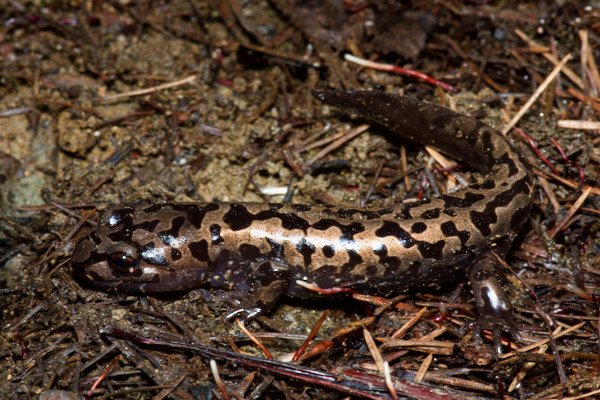
And a mere fifteen years later I found my second terrestrial-form Coastal Giant Salamander. (I admit that in the meantime I had also seen a couple of terrestrial-form California Giant Salamanders, which live closer to my home.)
Printed references:
- Behler, J. L., King, F. W. 1979. The Audubon Society Field Guide to North American Reptiles & Amphibians
- Corkran, C. C., Thoms, C. R. 1996. Amphibians of Oregon, Washington and British Columbia: A Field Identification Guide
- Crother, B. I. (ed.) 2017. Scientific and Standard English Names of Amphibians and Reptiles of North America North of Mexico, with Comments Regarding Confidence in Our Understanding, Eighth Edition
- Petranka, J. W. 1998. Salamanders of the United States and Canada
- Stebbins, R. C. 2003. Peterson Field Guide to Western Reptiles and Amphibians, Third Edition